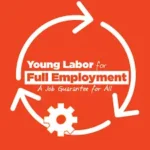[ez-toc]
Understanding Neoliberalism’s Ascent: The Invisible Doctrine Review
Description
Discover the rise of neoliberalism with insights from “The Invisible Doctrine” and explore how Australia can harness monetary sovereignty for a better future.
The Invisible Doctrine: Understanding Neoliberalism’s Ascent
Introduction
Neoliberalism has reshaped our world in profound ways, often subtly influencing our daily lives. “The Invisible Doctrine” by George Monbiot and Peter Hutchison delves into the origins, principles, and effects of neoliberalism, offering a comprehensive analysis of its ascent. This article will explore the book’s insights, aiming to provide a thorough understanding of neoliberalism and its far-reaching consequences.
I. The Origins of Neoliberalism
Historical Context
Neoliberalism appeared in the mid-20th century as a response to the perceived failures of Keynesian economics and state intervention. Post-World War II, many Western nations adopted policies that emphasized government control over economic activities. However, by the 1970s, economic stagnation and inflation led to a shift in economic thought.
Key Figures
Friedrich Hayek and Milton Friedman were pivotal in developing neoliberal thought. Hayek’s “The Road to Serfdom” and Friedman’s advocacy for free-market policies laid the groundwork for neoliberalism. These thinkers argued that government intervention stifled economic freedom and innovation.
Early Implementation
Neoliberalism gained traction in the UK and the US during the 1980s. Margaret Thatcher’s policies in the UK and Ronald Reagan’s economic reforms in the US marked the beginning of widespread adoption. Their administrations championed deregulation, privatization, and tax cuts, reshaping their economies, and influencing global policies.
II. Core Principles of Neoliberalism
Market Fundamentalism
At the heart of neoliberalism is a belief in market fundamentalism—the idea that free markets lead to best outcomes. Proponents argue that markets, if left to run without interference, efficiently distribute resources and drive economic growth.
Individualism
Neoliberalism emphasizes individual responsibility over collective welfare. This principle suggests that individuals are best positioned to make decisions about their own lives, and that personal success or failure is a result of one’s choices.
Deregulation
A cornerstone of neoliberal thought is deregulation, which involves reducing government controls and restrictions on businesses. This principle posits that less regulation leads to more innovation, competition, and economic growth.
III. Neoliberalism’s Ascent
Political Adoption
The ascent of neoliberalism in political spheres began in the 1980s with leaders like Margaret Thatcher and Ronald Reagan. Their administrations implemented policies that reflected neoliberal ideals, such as reducing the role of the state in economic affairs.
Margaret Thatcher

Thatcher’s tenure as Prime Minister saw significant neoliberal reforms, including the privatization of state-owned industries and the weakening of trade unions. Her policies aimed to reduce government spending and promote private enterprise.
Ronald Reagan

Reagan’s economic policies, known as “Reaganomics,” included substantial tax cuts, deregulation, and reductions in government spending on social programs. These reforms were designed to stimulate economic growth and reduce the federal government’s role in the economy.
Global Spread
Neoliberal Policies Promoted by the IMF and World Bank
The International Monetary Fund (IMF) and the World Bank have been instrumental in spreading neoliberal policies globally, particularly in developing countries. These institutions have promoted several key neoliberal reforms, often as conditions for receiving financial aid or loans. The main policies include:
1. Structural Adjustment Programs (SAPs):
– Fiscal Austerity: Reduction in government spending, often on social services such as health, education, and welfare.
– Tax Reforms: Shifting from progressive taxation to flat taxes and reducing corporate tax rates to attract investment.
2. Trade Liberalization:
– Reduction of Tariffs: Lowering import tariffs to promote free trade and open markets.
– Elimination of Trade Barriers: Removing quotas, subsidies, and other barriers to international trade.
3. Privatization:
– Selling State-Owned Enterprises: Encouraging countries to sell off government-owned companies and assets to the private sector.
– Promoting Private Sector Development: Supporting the growth of private enterprises to increase efficiency and productivity.
4. Deregulation:
– Reducing Business Regulations: Simplifying or cutting regulations that are seen as burdensome to businesses.
– Labor Market Flexibility: Implementing labor market reforms that reduce protections for workers, such as making it easier to hire and fire employees.
5. Financial Liberalization:
– Removing Capital Controls: Allowing for the free movement of capital in and out of countries.
– Encouraging Foreign Investment: Creating a favourable environment for foreign investors by ensuring property rights and reducing restrictions on foreign ownership.
6. Monetary Policy Reforms:
– Inflation Targeting: Prioritizing low inflation rates, often through high interest rates, to stabilize the economy.
– Independent Central Banks: Promoting the independence of central banks from political influence to ensure sound monetary policies.
These policies aimed to integrate developing countries into the global economy, enhance efficiency, and stimulate economic growth. However, they have also been criticized for leading to increased inequality, social unrest, and economic instability in some regions.
Economic Reforms
Neoliberal economic reforms have included tax cuts, privatization of public services, and trade liberalization. These measures have aimed to foster economic growth by creating more competitive and efficient markets.
IV. Effects on Society
Economic Inequality
One of the most significant impacts of neoliberalism is the increase in economic inequality. While neoliberal policies have led to economic growth, the benefits have often been unevenly distributed, with wealth concentrating in the hands of a few.
Public Services
Neoliberalism has profoundly affected public services like education and healthcare. Privatization and reduced funding have led to diminished access and quality, particularly for the most vulnerable populations.
Labor Market
The labor market has seen substantial changes under neoliberalism, including the rise of part-time and precarious work. Job security has decreased, and wages have stagnated for many workers, worsening economic disparities.
Environmental Consequences
Neoliberal policies often prioritize economic growth over environmental protection, leading to significant environmental degradation. Deregulation has allowed for increased exploitation of natural resources, contributing to climate change and biodiversity loss.
V. Criticisms and Controversies
Public Backlash
Neoliberalism has faced significant public backlash, with protests and movements challenging its principles. Many people have become disillusioned with the growing economic inequality and the erosion of public services.
Academic Critique
Academics and intellectuals have extensively critiqued neoliberalism, arguing that it undermines democracy and social cohesion. Critics like Joseph Stiglitz and Naomi Klein have highlighted the negative consequences of neoliberal policies.
Political Opposition
Political parties and movements worldwide have opposed neoliberalism, advocating for alternative economic models that prioritize social welfare and environmental sustainability.
VI. The Invisible Doctrine’s Analysis
Monbiot’s Perspective
George Monbiot’s analysis in “The Invisible Doctrine” offers a comprehensive critique of neoliberalism. Monbiot argues that neoliberalism has become an invisible ideology, so deeply embedded in our political and economic systems that it goes unchallenged.
Hutchison’s Contributions
Peter Hutchison’s contributions offer added insights, emphasizing the role of media and education in perpetuating neoliberal ideals. Hutchison explores how these institutions shape public belief and reinforce neoliberal policies.
Case Studies
The book includes case studies that illustrate the real-world impacts of neoliberalism. These examples highlight how neoliberal policies have affected various sectors, from healthcare to the environment, providing concrete evidence of their consequences.
VII. Neoliberalism Today
Current Landscape
Australian Government’s Strong Attachment to Neoliberal Economics
Australia has kept a strong attachment to neoliberal economic principles for several reasons, which have deeply influenced its policy landscape:
1. Historical Context:
 – 1980s Economic Reforms: Australia embraced neoliberalism during the 1980s under the leadership of Prime Minister Bob Hawke and Treasurer Paul Keating. Their economic reforms aimed to modernize the economy, which included financial deregulation, tariff reductions, and privatization of state-owned enterprises.
– 1980s Economic Reforms: Australia embraced neoliberalism during the 1980s under the leadership of Prime Minister Bob Hawke and Treasurer Paul Keating. Their economic reforms aimed to modernize the economy, which included financial deregulation, tariff reductions, and privatization of state-owned enterprises.
– Continued Support: Successive governments, both Liberal and Labor, have continued to support and implement neoliberal policies, embedding them deeply into the economic framework.
2. Economic Performance:
– Economic Growth: Neoliberal policies have been credited with contributing to Australia’s prolonged period of economic growth, low inflation, and low unemployment rates.
– Market Efficiency: The belief in market efficiency and the benefits of free trade and competition has driven policymakers to support neoliberal approaches.
3. Political Ideology:
– Liberal Party Ideology: The Liberal Party of Australia has a strong ideological commitment to neoliberal principles, emphasizing small government, deregulation, and privatization.
– Labor Party Shifts: While traditionally more supportive of state intervention, the Australian Labor Party has also adopted many neoliberal policies, especially in economic management, reflecting a shift towards a more centrist approach.
4. Influence of Global Institutions:
– IMF and World Bank: Australia’s economic policies have been influenced by the recommendations of global financial institutions like the IMF and World Bank, which advocate for neoliberal reforms.
– Trade Agreements: Participation in global trade agreements has reinforced neoliberal policies, promoted open markets, and reduced trade barriers.
5. Corporate Influence:
– Lobbying and Advocacy: Powerful business lobbies and industry groups have successfully advocated for neoliberal policies that favour deregulation, lower corporate taxes, and reduced government intervention in the economy.
– Privatization and Outsourcing: The push for privatization and outsourcing of public services has been driven by corporate interests looking to expand their market opportunities.
6. Public Perception:
– Economic Narrative: The narrative that neoliberal policies lead to economic prosperity and individual freedom has been promoted widely, shaping public opinion and political discourse.
– Media Influence: Major media outlets, often owned by business interests, have played a role in endorsing neoliberal economic policies and influencing public belief.
7. Policy Examples:
– Tax Policies: Successive Australian governments have implemented tax policies that align with neoliberal principles, such as reducing corporate tax rates and implementing the Goods and Services Tax (GST).
– Industrial Relations: Reforms in industrial relations, aimed at increasing labor market flexibility, reflect neoliberal priorities of reducing union power and promoting employer-friendly regulations.
– Public Sector Reform: Efforts to reduce the size of the public sector and increase efficiency through outsourcing and privatization of services continue to be a key aspect of Australia’s neoliberal economic agenda.
Overall, the Australian government’s attachment to neoliberal economics is a result of historical developments, political ideology, corporate influence, and a sustained belief in the benefits of free-market policies. However, this adherence has also faced criticism and challenges, particularly considering growing economic inequality and concerns about the sustainability of these policies in addressing contemporary social and environmental issues.
Pandemic Impact
The COVID-19 pandemic has exposed the vulnerabilities of neoliberal systems, particularly in healthcare and social services. The crisis has prompted calls for rethinking neoliberal policies and exploring fairer economic models.
Future Outlook
Looking ahead, there is a growing movement towards alternative economic models that prioritize social and environmental welfare. Concepts like the Green New Deal and Universal Basic Income are gaining traction as potential solutions to the shortcomings of neoliberalism.
Australia’s Monetary Sovereignty and Neoliberalism
Harnessing Monetary Sovereignty
Australia, like other sovereign nations, can issue its own currency. This monetary sovereignty offers significant opportunities for economic policy beyond the constraints often emphasized by neoliberal economics. Understanding and using this sovereignty can help Australia address some of the negative impacts of neoliberalism.
1. Understanding Monetary Sovereignty:
– Definition: Monetary sovereignty refers to a country’s ability to create its own currency and manage its monetary policy independently of external constraints. For Australia, this means the government can issue Australian dollars and set policies to influence economic activity.
– Public Money: Unlike household budgets, a government with monetary sovereignty is not constrained by the need to balance its budget. It can spend to achieve full employment and other social goals, knowing it can always create more currency if needed.
2. Potential Benefits:
 – Full Employment: By using its monetary sovereignty, Australia can implement policies aimed at achieving full employment. Government spending can be directed towards job creation programs, infrastructure projects, and public services, ensuring that everyone who wants to work can find employment.
– Full Employment: By using its monetary sovereignty, Australia can implement policies aimed at achieving full employment. Government spending can be directed towards job creation programs, infrastructure projects, and public services, ensuring that everyone who wants to work can find employment.
– Public Services: Increased public spending can enhance the quality and accessibility of public services such as healthcare, education, and social welfare, counteracting the adverse effects of privatization and austerity measures championed by neoliberalism.
– Economic Stability: Sovereign monetary policy can help stabilize the economy during downturns by enabling counter-cyclical spending. During a recession, the government can increase spending to boost demand and support economic recovery.
3. Challenges and Criticisms:
– Inflation Concerns: One common criticism of expansive monetary policy is the potential for inflation. However, with careful management and a focus on productive investment, inflation can be kept under control while maximizing economic benefits.
– Political Will: Using monetary sovereignty effectively requires political will and a shift away from neoliberal ideology. Policymakers need to embrace the concept that public money can be used proactively to achieve social and economic goals.
4. Policy Recommendations:
– Invest in Infrastructure: Direct public investment into infrastructure projects that create jobs and enhance long-term economic productivity.
– Support Green Initiatives: Fund green energy projects and environmental protection programs to address climate change and create sustainable jobs.
– Enhance Social Welfare: Increase spending on social welfare programs to reduce inequality and support vulnerable populations, ensuring that the benefits of economic growth are widely shared.
– Promote Public Services: Reinvest in public services such as healthcare and education to improve quality and accessibility, counteracting the negative impacts of privatization.
By using its monetary sovereignty, Australia can move beyond the limitations imposed by neoliberal economics and create a more fair and sustainable economy. This approach aligns with a compassionate and ethical political system, ensuring that economic policies serve the broader public interest rather than just corporate and elite interests.
Conclusion
Summary of Key Points
Neoliberalism has profoundly influenced our world, shaping economic policies and societal structures. “The Invisible Doctrine” by George Monbiot and Peter Hutchison provides a critical analysis of neoliberalism’s ascent, highlighting its origins, principles, and impacts. Understanding Australia’s monetary sovereignty offers a pathway to address some of these negative impacts and build a fairer society.
Final Thoughts
Understanding neoliberalism is crucial for addressing its consequences and exploring alternative economic models. As we face global challenges like economic inequality and climate change, rethinking neoliberal policies and using monetary sovereignty becomes increasingly important.
Call to Action
Read “The Invisible Doctrine” to gain a deeper understanding of neoliberalism’s impact on our society. Share your thoughts using #NeoliberalismImpact.
Engaging Question
How do you think neoliberalism has shaped the world we live in today?
Social Sharing
If you found this article insightful, share it with your contacts and on social media.
References:
A Masterclass on The Mess We’re in: https://youtu.be/Rz3mZeKRCEI?si=ZT0F8vKlxhrPTu88
The failure of Neoliberalism and how to solve it: https://youtu.be/PwHTd7AnZ7c?si=LuLCm84ckkGaus2P
George Monbiot on replacing neoliberalism: https://youtu.be/BPMlfHzCoUI?si=4s2NhZag6kut3o7Z
